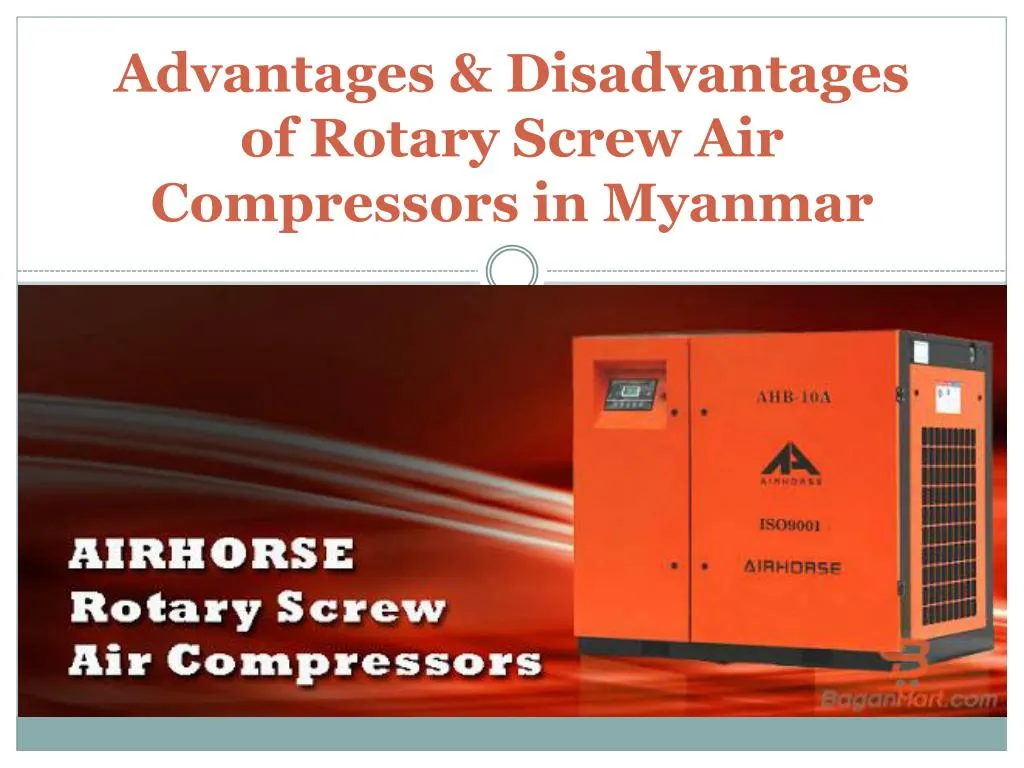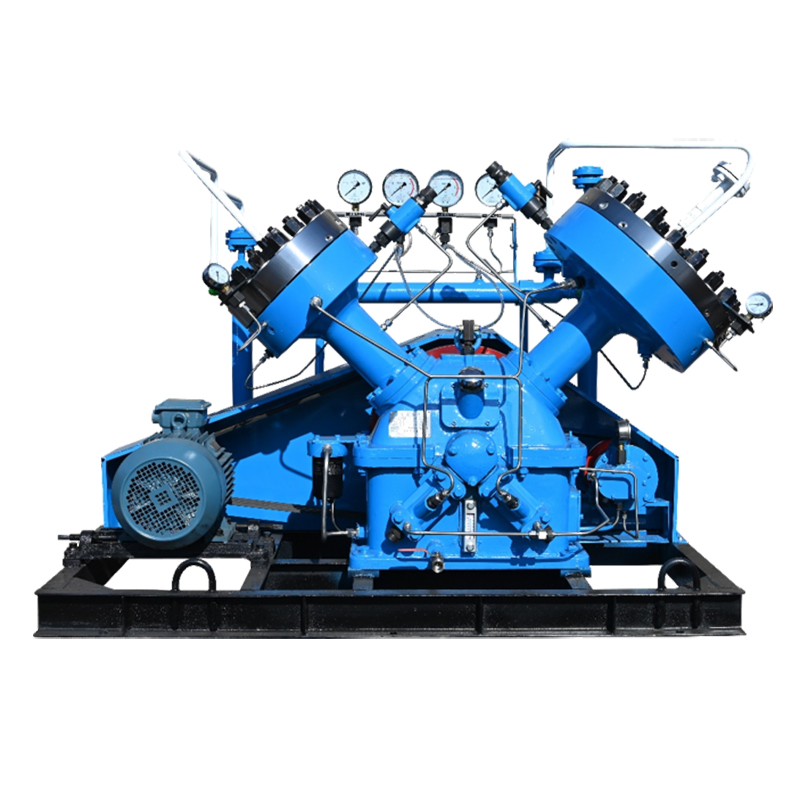
Different Types of Diaphragm Compressors and Their Uses
Diaphragm compressors are highly versatile and efficient machines used for a range of industrial purposes! They come in a variety of types, each with its own unique advantages and applications. (Firstly,) belt-driven diaphragm compressors are the most commonly employed due to their affordability and ease of operation. These devices employ an electric motor connected to a belt drive system, which in turn activates a reciprocating piston that compresses air within the diaphragm chamber. With this simple setup, these compressors can provide up to 100 psi of pressure at relatively low costs. On the other hand, rotary screw diaphragm compressors offer higher performance levels than belt-driven variants but tend to be much more expensive. The components involved here comprise an electric motor coupled with a gearbox, which turns two rotary screws that pressurize air within the diaphragm chamber. This type of compressor is capable of reaching up to 200 psi and as such is often used in industrial settings where high pressures are needed for specific tasks. However, they also require regular maintenance and servicing which adds up cost wise over time. Moreover, there are hybrid models made from both belt-driven and rotary screw
read more →
How to Unlock the Power of a Diaphragm Compressor
Unlocking the power of a diaphragm compressor can seem like an impossibility, but with certain techniques and tricks you can get it done! This essay will explain (in detail!) how to unlock its untapped potential. First of all, you need to understand the basics principles of a diaphragm compressor. A diaphragm is a type of air pump that uses pressure to compress air into smaller spaces. To maximize its effectiveness, you must ensure that your compressor is properly set up and sealed off from outside air. Don't forget to check for any loose screws or other imperfections in the setup! Additionally, it's important to make sure your compressor has enough suction power to pull in adequate amounts of air. If it doesn't have enough suction, then the compression process won't be as efficient as it should be. Utilizing proper maintenance and regular inspections can help maintain optimal performance levels over time. Furthermore, controlling the temperature is crucial when trying to unlock the full potential of your diaphragm compressor. The hotter the ambient temperature is, the harder it is for your compressor to work effectively; thus making it less efficient and more prone to
read more →
How to Maximize Performance with a Diaphragm Compressor
Maximizing performance with a diaphragm compressor can be a tricky task. It requires knowledge of the system and its components, as well as an understanding of how they work together. However, if done correctly, it can drastically improve the overall efficiency and output of the compressor! First off (and most importantly), one must ensure that the air intake filter is clean and free of any debris. This will allow for maximum air flow into the system, which will result in increased pressure and ultimately more power for your compressor. (Additionally, it's important to make sure all hoses connecting the components are tight and secure!) Furthermore, adjusting the pressure settings on the regulator valve can also help increase performance. By increasing or decreasing these settings depending on your needs, you'll be able to find an optimal balance between air output and pressure. Finally, replacing worn-out parts with new ones regularly is key too - this helps reduce friction and ensures everything works together smoothly! All in all, optimizing a diaphragm compressor takes patience and attention to detail but is definitely worth it in terms end! However, there are some potential drawbacks to watch out
read more →
Advantages and Disadvantages of Using Diaphragm Compressors
Using diaphragm compressors has its pros and cons. The (major) advantage is that they are very compact in size, making them great for locations where space is limited. Additionally, diaphragm compressors require minimal maintenance, which can save time and money. They also don't generate much noise while running, so it could be a good choice if you need to get the job done without disturbing others! However, there are also drawbacks to using diaphragm compressors. Firstly, they aren't as powerful as other types of compressors, so they may not be suitable for certain applications that require more power output. Secondly, they produce less air flow than other models so their performance can become affected when operating over long periods of time. Finally, since the design is quite complex it means repairs or replacements can be expensive and difficult to obtain. In conclusion, while diaphragm compressors have some benefits such as being small-sized and relatively silent during operation; there are still some drawbacks like low power output and high repair costs which should be taken into consideration before deciding whether this type of compressor is right for your needs. Yet with proper care this
read more →
What is the Impact of a Diaphragm Compressor on Your Business?
The impact of a diaphragm gas compressor on your business can be both positive and negative. It is important to understand both aspects in order to make the right decision. Firstly, having a diaphragm compressor can reduce costs dramatically. There is less energy spent operating it compared to other types of compressors, making it more efficient and economical. Furthermore, these pumps are usually smaller in size which can be an advantage if space is limited. However, there are some drawbacks as well! For instance, they have a shorter life span than conventional compressors and require more frequent maintenance due to their design. Moreover, they don’t always generate the same amount of power as other models so that may limit its use for certain applications. Overall, investing in a diaphragm compressor for your business could save you money but there are also risks involved when selecting this type of pump. Therefore, it's important to research thoroughly before making any decisions so you know exactly what the potential outcomes may be! Additionally, transition phrase: "On the other hand," it's worth considering if a diaphragm pump would suit your particular needs better than other types of compressors
read more →
What is a Diaphragm Compressor?
Variant of the reciprocating compressor a diaphragm compressor is a variant of the classic reciprocating compressor with backup and piston rings and rod seal. The compression of gas occurs by means of a flexible membrane, instead of an intake element. The back and forth moving membrane is driven by a rod and a crankshaft mechanism. Only the membrane and the compressor box come in touch with pumped gas. For this reason this construction is the best suited for pumping toxic and explosive gases. The membrane has to be reliable enough to take the strain of pumped gas. It must also have adequate chemical properties and sufficient temperature resistance. A compressor is a device that uses to compress gas or air so that it can transfer from one place to another. Compressors most widely use all over the world in different industries. Most compressors are used in pneumatic systems. There are multiple types of compressors , and a diaphragm compressor is one of them. In the previous article, we discussed different types of compressors ; therefore, in this article, we will mainly discuss the diaphragm compressor. Diaphragm Compressor Working Principle The working principle of the diaphragm pump
read more →
Compression of hydrogen gas [ edit ]
Sundyne’s ppi diaphragm compressors deliver non-contaminating gas compression, through a leak-tight mechanism with static seals that do not need to be purged or vented. A set of metallic diaphragms isolates the process media from the piston & piston rings to completely eliminate the risk of cross contamination. Sundyne’s ppi compressors present zero leakage threat to the atmosphere, providing an ideal solution for safely handling ultra-pure, corrosive and volatile gases. All models can be built to meet api 618 standards where applicable to diaphragm compressors. These machines are available in a variety of flexible configurations and sizes, making them easily customizable to fit a wide range of applications in the hydrogen processing, petrochemical, refining, electronic gas, specialty gas and poly-silicon production industries. One example of mechanical compressors is the reciprocating piston compressor which is equipped with two separate automatic valves for inlet and outlet hydrogen, and a piston-cylinder system constitutes a single-stage reciprocating compressor (fig. 2 a). Here, a connecting rod connects a piston to a crankshaft and the piston transforms the rotary motion of a moving unit into the approximate linear motion of the piston. This movement is referred to as reciprocating motion [ 24 ] in
read more →